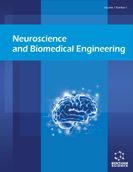Abstract
The peptide poison binding mechanism shows how different types of potassium channels are affected or blocked by peptide poisons derived from disparate species of scorpions and snakes. The peptide poison binding mechanism to the extracellular domain of potassium channel called pore domain was examined. The binding affinity of a given poison molecule to a specific potassium channel is quantified on the basis of ZDock Score of Protein-Protein docking using Accelrys Discovery Studio. Interacting amino acid residues of peptide toxin and those of the extracellular pore domains are identified by a standalone application and mechanism behind the toxin’s binding severity to potassium channel is deduced. From ZDock score of pose with highest score obtained after docking, we found that peptide poisons have the highest binding affinity to the calcium-gated potassium channel, followed by inward rectifier potassium channel and then lastly to the voltage-gated potassium channel. Using Delphi, we calculated charges on the toxin molecule and found that Electrostatic charges on peptide poison and pore forming residues of Potassium channel are identified as key factors responsible for binding. Dendrotoxin, which is having overall and per amino acid higher positive charge, is found to be most potent toxin compared to charybdotoxin and agitoxin.
Keywords: Binding analysis, MD simulation, potassium channel blocker, snake venom, scorpion venom.
Graphical Abstract
 46
46

